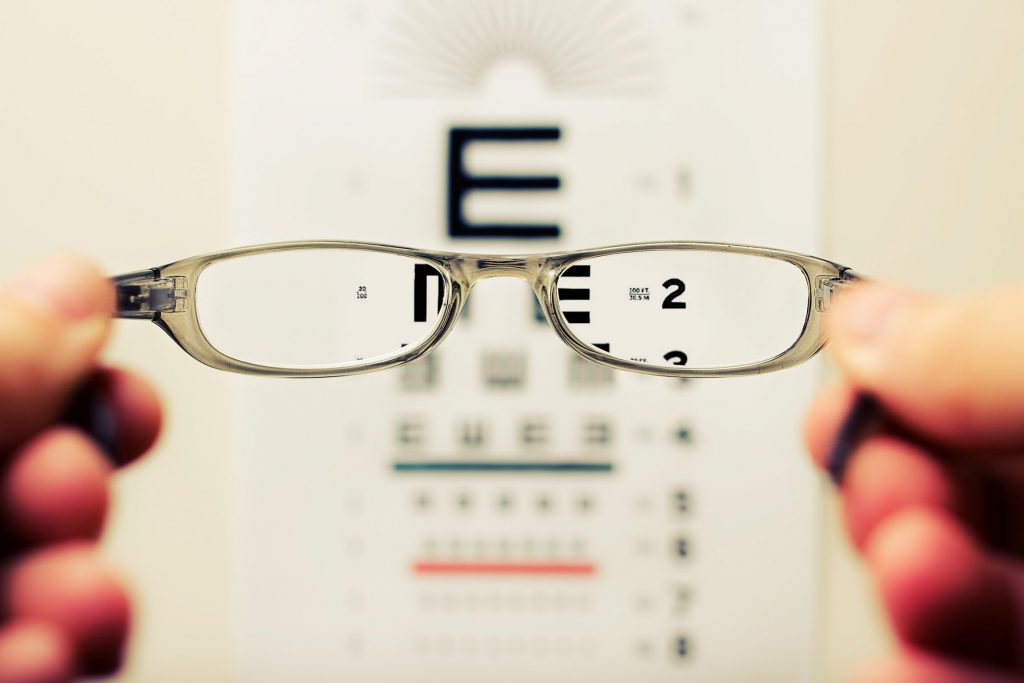
Get Your Eyes Tested this JulEYE
July or JulEYE is National Eye Health month, led by the Eye Surgeons Foundation of Australia, it aims to raise community awareness of eye health conditions.
Every 65 minutes an Australian loses part or all of their vision, yet it is thought that 75% of vision loss is preventable. This is why eye health education is important and not something to ‘turn a blind eye’ to. Hopefully this blog finds you with good eye health and can help you become more aware of the symptoms to look out for, along with tips for keeping your eyes in good shape.
Our brain combines the fireworks of our 5 senses; seeing, hearing, smelling, tasting and touch to create a meaningful whole. Of the 5 senses, sight is considered the most important as we perceive up to 80% of all impressions through our vision. They are our best protection against danger; although the other senses also play a vital role, and without sight become enhanced.

Fun Eye Facts
Eyes continue to fascinate and surprise scientists as research advances. We don’t tend to give our eyes much thought, until something goes wrong with our vision. It is only then that we realise just how important and amazing they really are. Here are some fun facts about the human eye:
- The eye is one of the most complex organisms in the human body, second only to the brain.
- Eyes are made up of more than 2 million working parts. The optic nerve contains over 1 million nerve fibres, with each nerve playing a vital role in sight.
- As a result of such complex nerve connections, currently eyes cannot be transplanted.
- Our eyeballs remain the same size from birth to death, unlike our nose and ears which grow throughout our life.
- We blink on average 10 – 15 times per minute; resulting in a total of around 6.3 million blinks per year.
- Our iris contains 256 unique characters, which is 6.4 times that of a fingerprint, making retina scanning far more secure.
- Eyes are essentially cameras that capture light, sending it back to the brain for interpretation.
- Our retinas perceive the world upside down, while our brain flips the images.
- The human eye is capable of seeing 500 shades of grey, while scientists estimate that humans can distinguish up to 10 million colours.
- Our eyes focus on an average of 50 objects every second.
- Shark corneas are almost identical to that of a human; so much so that they have actually been used in transplant surgery.
Common Eye Diseases
Unfortunately as we age we are more at risk of developing problems with our eyes. Some of the most common being:
Age Related Macular Degeneration is a serious and permanent eye disease causing loss of eyesight in the centre of your field of vision, making focusing on detail close up problematic. It is the leading cause of vision impairment over the age of 40. The cause of macular degeneration remains unknown, but it is most common amongst people who smoke, are over 75 years old, or who have close family members with the condition. There are 2 types of macular degeneration: dry which is the most common, causing a slow decline with gradual loss of vision; and wet which is rare, leading to rapid loss of central vision. Currently dry macular degeneration has no treatment; although some doctors prescribe vitamins such as zinc, vitamins C, E and beta carotene. Whilst wet macular degeneration is treated with Lucentis injections, which aim to slow progression.
Cataracts are clouding of the clear lens' or surrounding fluid in the eye. Again cataracts are most common amongst older people, but can develop in the young and in rare cases babies have even been born with cataracts. Cataracts are the leading cause of blindness in adults worldwide. Cataracts can lead to blurred vision, distortion or double vision and glare sensitivity. People often describe cataracts are being like 'looking through a veil'. Although most commonly related to aging; smoking, family history, diabetes and long exposure to sun without eye protection can also lead to the development of cataracts. The good news is that with modern medicine they can be well treated. In the early stages visual aids are key, but as they progress surgery can be effective.
Glaucoma is a common eye problem, causing vision loss, and if left untreated, blindness. Glaucoma is often caused by blockage and fluid pressure in the eyes drainage system, affecting the optic nerves connection to the brain. Though more research is necessary as doctors do not yet fully understand the causes. Most people with glaucoma have few to no symptoms, until their sight is already damaged. Deterioration is usually very gradual, which is why regular eye checks are strongly recommended over the age of 40. Once symptoms become noticeable, you may begin to detect loss of peripheral vision, some blurred vision or difficulty adjusting to low light. Again, you may see a pattern here, it is more common over the age of 40. It has also been linked to family history, diabetes, high blood pressure and short sightedness. Early detection and management can prevent vision loss in most cases.
Diabetic Retinopathy occurs when the tiny blood vessels inside the retina are damaged as a result of diabetes. This condition can seriously affect vision, sometimes causing blindness. You are most at risk if you have diabetes that is not well managed, high blood pressure or kidney disease. Diabetic retinopathy causes blurred or distorted vision, making it difficult to read, watch television or see faces. It also leads to increased sensitivity to glare, making it difficult to see at night. Laser or surgery can slow the progression, but it remains irreversible.
Tips for Maintaining Healthy Eyes
As you may have noticed, there is a trend with many of the eye diseases being age related. This you are unable to do anything about, but there are things you are able to do to take care of your eyes:
- Wear sunglasses. Australians are pretty good at applying sunscreen to protect against the harsh UV rays, but wearing sunglasses is also very important. Damage caused by the sun is often irreversible, but wearing an Australian Standard UVA and UVB pair of sunglasses when out in the sun can help protect against the harsh affects, protecting your sight as you age.
- Regular eye tests are recommended over the age of 40. Most conditions can be treated more easily and successfully if diagnosed early. Recommendations are once every 3 years for those under 65 and once per year over 65. However, an optometrist may recommend more regularly if you have a family history or health problems such as diabetes and high blood pressure. However, if you notice any changes to your sight or experience any recurring problems it is important not to wait for your next appointment to get checked, book right away.
- Eating a healthy, balanced diet is also important. Eating plenty of fruit and vegetables provides the vitamins and minerals to support not just a healthy body, but healthy eyes too. A good diet can help protect against age related macular degeneration and cataracts. A poor diet can lead to many health concerns, which in turn can affect your eyes; so watch what you eat.
- Give up smoking, as tobacco is directly linked to macular degeneration, along with other eye problems.
- Get plenty of exercise as this improves circulation and oxygen intake, both of which are vital for healthy eyes. For an excellent exercise program to do at home visit my previous blog, Lockdown Exercises.
- Aim to Sleep well because as we sleep our eyes are being continuously lubricated, clearing out the irritants such as dust particles or smoke that accumulate throughout the day.
- Don’t strain your eyes, by using prescription lens’ where necessary. You are also able to buy magnifiers, such as the FC Optics LED Lighted Reading Magnifier on Amazon au.
Further Information and Support
If you or someone you know needs support contact Vision Australia by clicking here or call 1300 84 74 66. If you live in NSW you may be eligible to apply for the NSW Spectacles Program.




1 thought on “500 Shades of Grey”